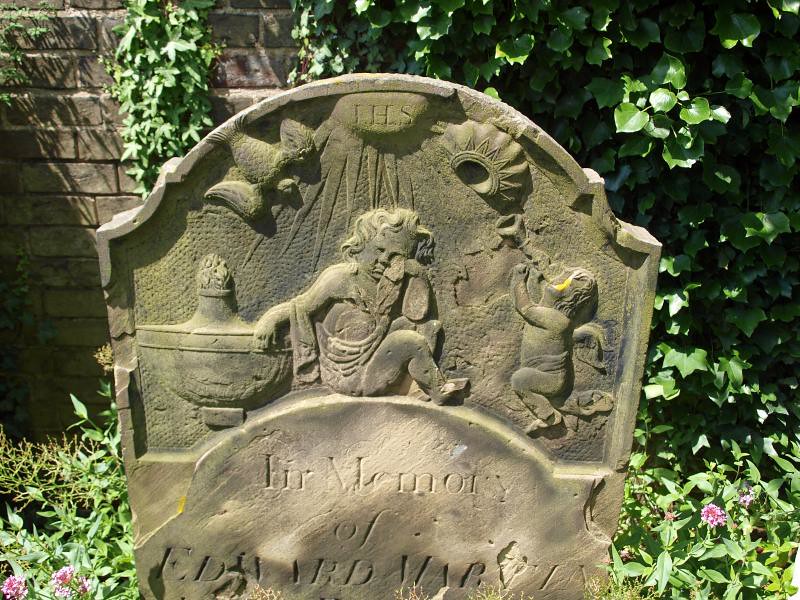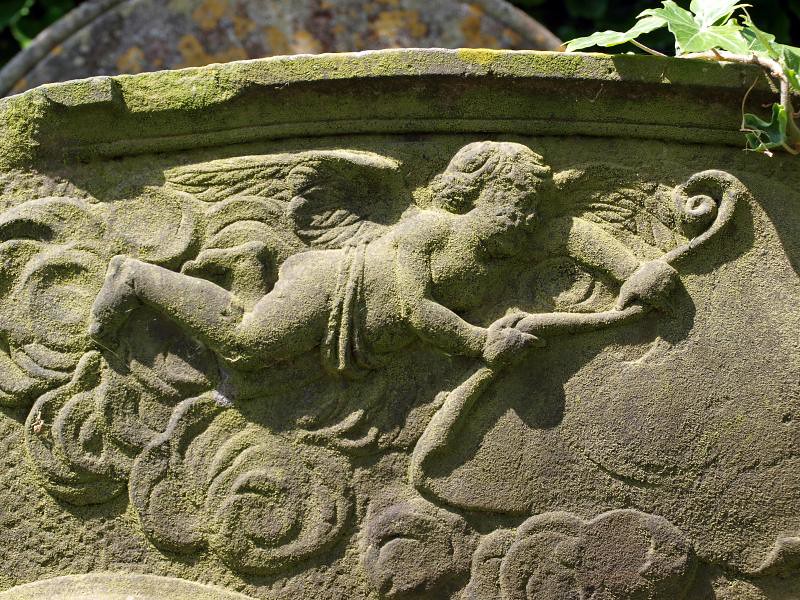ST MARY. The inside has more of interest than the outside. It represents the building begun and dedicated by Bishop Eustace (1198-1215). A long and wide Transitional nave with seven bays, divided by slim circular piers with scalloped capitals. The arches are pointed and finely moulded. The clerestory was added or renewed in the C15. But to the earlier period belongs the excellent N doorway which is no doubt the work of the cathedral and monastery workshop. The arch here is still round and has in two orders a decoration still essentially a three-dimensional variety of the zigzag motif, but the arch orders rest on columns with shaftrings and stiff-leaf capitals (cf. Deanery, i.e. Infirmary Chapel). E.E. chancel with lancet windows, except for the first from the W which are on the S side Dec, on the N Perp. Perp also the E window. The W steeple belongs to the C14, see the tower arch into the nave with its characteristic mouldings, the W door, the bell-openings and especially the spire with two tiers of dormers, one near the foot, the other near the top. Pinnacles on the corners of the tower-top; no battlements.
Nearer the cathedral is another timbered house, and between them
stands St Mary’s church, with its spire rising above the long low roof;
it is reached by a dainty avenue of almond trees across the sward. Below
the vicarage are the almshouses, with gables and a tower, standing
round three sides of lawn and garden.
St Mary’s church, begun in 1198, has a 14th century tower and spire, and windows of all three medieval centuries, filling the interior with light, some of them shining with rich glass. The long nave arcades of seven bays have pointed 13th century arches, and tall pillars with scalloped capitals marking the passing of the Norman style. A fine doorway of this time, sheltered by the north porch, has an arch with elaborate carving of zigzag under a hood, and clustered shafts with capitals of graceful foliage. The blocked south doorway has lost its shafts after 750 years, but keeps its arch of zigzag and its leafy capitals. The old priest’s seat in the chancel has a trefoiled arch and there is a fine little double piscina in the south chapel, which is entered by a low medieval arcade. The triple lancet of its east window has the Crucifixion and Our Lord in Glory, St Edmund and his martyrdom, and St Etheldreda with a fine picture of the cathedral. The east window of the chancel has glass showing the Nativity and the Shepherds. Another window has Our Lord Risen, with blue-winged angels; and one in memory of the men who fell in the Great War has figures of St George, the Archangel Michael, and Earldorman Brihtnoth as a warrior. St George is fighting the dragon with the princess looking on. Below Brihtnoth is a fine picture of the boat bringing his body to Ely, rowed by nuns, candles burning by his bier. A big broken font is in the churchyard, and on a buttress of the tower is a tablet reminding us of the Ely riots, with the names of five men executed in June 1816 “for divers robberies.”
Perhaps we should think much more of St Mary’s if it were not in the shadow of Ely Cathedral; it would be a superb building indeed which could endure such rivalry. A rare town it would be, also, which could compare with this, a gem in England’s coronet.
Flickr.


No comments:
Post a Comment